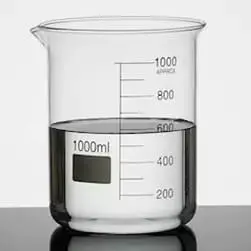IUPAC Name
Propan-2-one
Cas Number
67-64-1
HS Code
2914.11.00
Formula
CH3COCH<
Appearance
Clear, Colorless Liquid
Common Names
Propanone, Dimethyl Ketone
Packaging
100 @ 200 kg Iron Drum, 20 MT / 20FCL
Acetone, also known as propanone, is a clear, colorless, flammable, and volatile liquid with a molecular formula of CH3COCH3. Due to its small size and the presence of the carbonyl group, acetone is capable to form favorable interactions with water. These properties cemented its position as an ideal solvent for cleaning purposes in the laboratory as it is miscible in both water and organic solvents.
Small quantities of acetone can be found naturally in plants and animals as it is a metabolic product. Previous studies have explored the relationship between diabetes and acetone concentration in blood and urine which observes that diabetic patients tend to have larger amounts of acetone. Even though it is a natural product found in our bodies, acetone is toxic in high doses.
Acetone is capable of dissolving plastic glasses frames, jewelry, pens and pencils, rayon stockings, and other rayon garments. Acetone can polymerize rapidly under the influence of air, light, or upon heating. It can also polymerize upon contact with a catalyst, strong oxidizers, and various metals such as copper and aluminum.
Acetone can be obtained directly or indirectly from propene. Currently, the indirect oxidation of propene is the most preferred method which contributes to about 83% of acetone production. This process consists of two major steps with the first step involving the Friedel-Crafts alkylation of benzene with propene to produce cumene. The resulting cumene is oxidized to give cumene hydroperoxide (CHP). Using a strong mineral acid as a catalyst, CHP is cleaved to produce acetone and phenol.
An alternative synthesis is the catalytic dehydrogenation of 2-propanol to acetone where 2-propanol is obtained from the hydration of propene. This synthesis route used to account for 50-60% of the acetone production in the USA during the 1970s but due to the lower costs of cumene oxidation, this methodology has declined ever since.
Acetone is an important solvent for most synthetic fibers and plastics. It is used primarily in the production of commercial products such as acrylic plastics, which are used for glazing, signs, lighting fixtures, and displays.
It is used as an essential volatile component in some of the paints and varnishes. In the paint industry, it is used to prepare metal prior to painting. Typically, it is converted into 4-methylpentan-2-one (methyl isobutyl ketone, MIBK) to be used in paint. Moreover, it can be used for thinning fiberglass resin, paint, vinyl, adhesives, and varnishes.
Acetone is commonly used in nail polish remover and in chemical peels. It functions by breaking down nail polish, allowing the easy removal of nail polish with the aid of a cotton swab. Being a volatile compound, it evaporates quickly and this allows the nail to be left dry. Acetone is also used by makeup artists to remove skin glue on wigs and fake mustaches.
It is commonly used to increases the efficacy of a medication as it improves the delivery of the drug. Without acetone, the pills may find difficulty compacting to the correct density and may only be partially dissolved.
For the optimal performance of electronic devices and components, it has to be thoroughly cleaned. Acetone serves as a great cleaning solvent for this purpose.
Due to its ability to dissolve oil and sludge, it is often employed to contain oil spills. Moreover, it is relatively non-toxic as compared to other organic compounds.
Acetone is used to produce many important chemicals. Some of these include methyl methacrylate (MMA), bisphenol-A (BPA), and methacrylic acid. The uses of MMA and BPA include the production of many plastics, acrylic products, sealants, lacquers, and epoxies.
Acetone is used to thin polyester resin and to dissolve epoxies and glue before and after it sets. In the laboratory, acetone has very important applications as a solvent in many chemical experiments and as an equipment cleaner. In addition, acetone is applied for safely storing rubber cement and some household cleaners.
